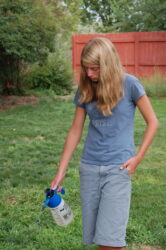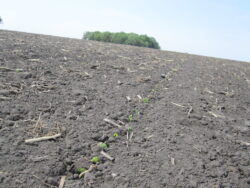In the realm of lawn care and maintenance, the use of herbicides to control unwanted weeds is a common practice.
One such herbicide, 2,4-D, is widely utilized for its effectiveness against broadleaf weeds.
However, homeowners and professionals often question its safety regarding Kentucky bluegrass, a popular choice for cool-season lawns.
Overview of 2,4-D Herbicide
2,4-D is a selective herbicide, meaning it targets broadleaf weeds without harming grasses.
It’s designed to eliminate weeds like dandelions, clover, and plantains, which can compete with turfgrass for nutrients and water.
Impact on Kentucky Bluegrass
- Selective Nature: Due to its selective properties, 2,4-D does not harm Kentucky bluegrass when applied correctly. It targets the broadleaf weeds while leaving the grass unharmed.
- Proper Application: The key to using 2,4-D safely on Kentucky bluegrass lies in following the product’s label instructions. This includes applying the correct dosage and avoiding treatment under extreme weather conditions to prevent stress on the grass.
- Integrated Weed Management: Beyond herbicide application, maintaining a healthy lawn through proper mowing, watering, and fertilization can naturally suppress weed growth and reduce the need for chemical treatments.
Best Practices for Using 2,4-D with Kentucky Bluegrass
- Adherence to Label Instructions: Always consult the herbicide label for guidance on application rates and timing to ensure the safety and health of Kentucky bluegrass.
- Spot Treatment: For minor weed infestations, consider spot treating with 2,4-D rather than blanket applications, minimizing herbicide use and exposure to the grass.
- Monitoring and Care: After applying 2,4-D, monitor the lawn for any signs of stress and provide appropriate care, such as watering, to help the grass recover.
FAQs: 2,4-D Use on Kentucky Bluegrass
Q: Is 2,4-D safe for all lawn types? A: While 2,4-D is safe for many types of grass, including Kentucky bluegrass, it’s important to verify its suitability for your specific lawn type by reading the product label.
Q: What should I do if my lawn shows signs of stress after applying 2,4-D? A: Provide supportive care through watering and avoid mowing immediately after application to allow the grass to recover.
In Summary
- 2,4-D is a selective herbicide that, when used according to label instructions, is safe for Kentucky bluegrass, effectively controlling broadleaf weeds without damaging the turf.
- Following label instructions and employing spot treatment strategies can enhance the safety and effectiveness of 2,4-D on Kentucky bluegrass lawns.
- Integrating cultural practices with herbicide application promotes a healthy lawn that naturally resists weed invasion.
Sources
- For detailed information on the use of 2,4-D in turfgrass management, including its application on Kentucky bluegrass, the document “Use of 2,4-D and Other Phenoxy Herbicides in Turfgrass in the United States” by Kai Umeda provides comprehensive insights.
- Additional guidelines and best practices for applying 2,4-D can be found through lawn care extension services and herbicide manufacturers’ recommendations.




